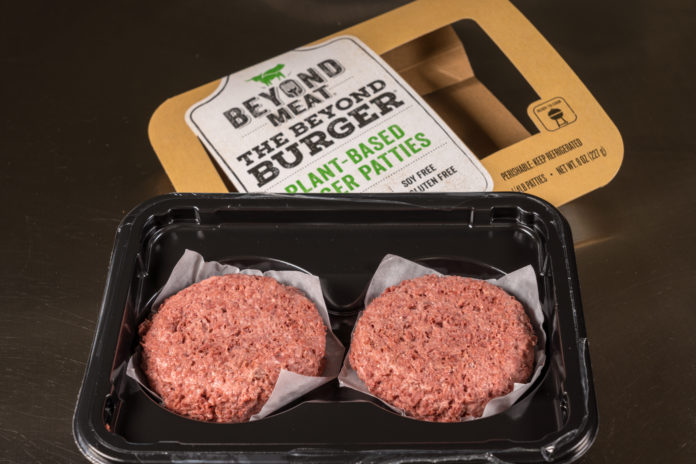The topic of artificial meat is being discussed more and more but remains quite a mystery for many. And while the future of artificial meat that is produced from stem cells remains uncertain, the plant-based option has already made an impact.
Also known as imitation meat, faux meat, or mock meat, this intriguing alternative recently exploded in popularity. One of the biggest companies on the planet such as Nestle and Burger King are also embarking on this alternative food journey by introducing food brands such as Impossible Foods that are leading the way by example.
But even when it seems like veggie burgers and other foods with artificial meats are trending everywhere, the consumers of artificial meat are still only a small piece of the puzzle within the food market and the understanding of the food seems rather small.
Let’s try to get a grasp of what artificial meat is, how did it come here, and why in 4 easy steps! After all, this could be our future food.
Step 1: History
Dating back as early as 206 BC–220 AD, artificial meat and animal-friendly alternatives have been around for longer than one might think. A popular meat alternative today such as Tofu made from soybeans was invented by the Han Dynasty in China during those years with a strong presence of vegetarian-based Buddhist cuisine.
Even after spreading to Japan and beyond, Asia was not the only place on Earth where artificial meat made its presence felt.
Artificial meats can be traced back to Medieval Europe as well. At the time, various religious events and traditions such as Lent prohibited the consumption of warm-blooded animals and used chopped almonds and grapes instead to make mincemeat.
From meat replacements in vegetarian sanitariums in 1877 and cookbooks from 1909 to fighting food shortages during both World Wars—the early footprints of artificial meat left by our ancestors developed the pattern to follow for the future generations and sparked a popularity rise in the meat alternatives that would serve a completely new purpose in today.
Step 2: Processing & Composition
Whether it’s crispy bacon or a juicy patty inside your favorite veggie burger, getting to know its composition and processing will make you one step closer to understanding where does your meat replacement comes from.
Soy protein isolates and soybean flour and gluten are the foundations for most artificial meat products that you see on the market. Whole legumes and a mix of other many foods like avocado or beetroot could be used as well to allow the delivery of aesthetic qualities or chemical characteristics of specific meat.
But that’s not all. Additives are also included that vary from coloring agents to emulsifiers and more. Companies like Impossible Foods started using other techniques such as coconut oil to resemble beef fat when melted.
Processing mostly revolves around the easier technique known as Thermoplastic Extrusion that provides conditions for both mass production and formation of desirable fibers instead of the more complex approach of Fiber Spinning.
Step 3: Health
One of the most important and popular topics on artificial meat is health and debates if it is a healthier option than eating regular meat instead of plant-based formula.
While vegetables are always going to be healthy for everyone, it instantly delivers a perception that artificial meat based on plants are healthier by default. However, they can’t be compared to raw and organic vegetables since artificial meat is processed food.
Eating meat alternatives will certainly let you dodge potential risks such as cancer from red meat, undercooked meat poisoning, and more. But to classify it as a health food could be false hope, while food and nutrition science regarding artificial meats are still shrouded by a lot of discussions.
Step 4: Rise in Popularity
As we now know, alternatives like these have been here for hundreds of years, but why now? Why is there such a rise in popularity in recent years?
The complex world with the ever-growing population and challenges like hunger, global warming, and declining resources led to searching for new ways to overcome these challenges. Artificial meat covers many aspects including ethical eating, animal welfare, compassion, positive impact on the environment, sustainability, and more.
Alternative meats and dishes such as veggie burgers, pizza, sausages, and bacon and similaralso aid in other lesser-known, but just as important areas such as socializing. When you can have what everyone else is having, it makes it that much easier to go out with friends.
The benefits of artificial meat can go a long way. More people are starting to embrace the new ways of our food culture and its potential for positive impact, not only on the personal scale but on the world as well.







